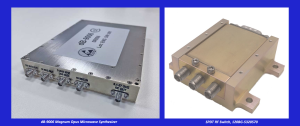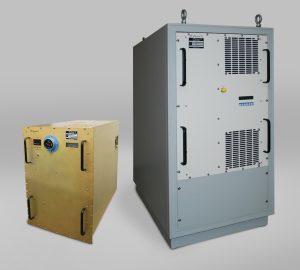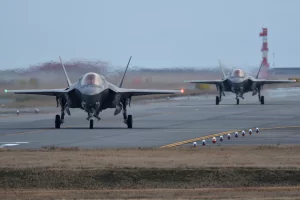MPD: The 2019 defense budget is chock full of EW, radar, and other programs with lots of RF and microwave content, so, if your company serves the defense market, what are your thoughts about how this will affect your business in the coming years?
JT:
The size of the defense budget is certainly favorable for our industry. dB Control remains in a unique position because our high-power products are usually in high demand no matter the defense budget. We’ve already met the boost in demand for millimeter-Wave high power amplifiers (HPAs) and specialized contract manufacturing services. With more than $244 billion allocated in the U.S. defense budget for equipment procurement and R&D alone, we’re ready to continue working with major defense contractors on the next evolution of TWT amplifiers (TWTAs), microwave power modules (MPMs) and power supplies.
MPD: 5G is already generating revenue for some sectors of the RF and microwave industry, and this should increase next year. How do you think the implementation of 5G will affect business in the coming year?
JT:
5G promises higher speeds, low latency and higher capacity for more bandwidth. Specifically, we see opportunities to support the 5G backhaul due to the need for millimeter-Wave bands above 60 GHz. Currently, our millimeter-Wave MPMs and TWTAs reach the 40 GHz range, and we are working with sources up to 92 GHz. 5G is a great opportunity for dB Control, and we have a working roadmap to help support and define the 5G network in the coming years.
MPD: Overall, how would you compare the health of the industry compared with years past?
JT:
The industry is thriving, and we have unmanned aerial vehicles to thank for part of that. With recent headlines about the U.S. Marines’ “Mega Drone” and the MQ-9 Reaper’s new automated take-off/landing capabilities, UAVs continue to provide opportunities for RF/microwave breakthroughs. dB Control’s high-power TWTAs and MPMs are onboard many UAVs — including aircraft used for civilian applications. This past summer, MQ-9 Reapers captured high-resolution photos and videos of the California wildfires. The footage helped first responders analyze the leading edge of the flames, decide on containment measures and plan evacuations ahead of time. As long as UAV opportunities remain (both in and out of the defense sector), we can rely on innovation as a means to buoy industry health.
MPD: What RF and microwave technologies will be driving the industry in 2019?
JT:
By the year 2024, millimeter-Wave technology is expected to increase by $2.5 billion, which is no surprise to us. Millimeter-Wave products are incredibly important for applications such as radar and electronic warfare. We’ve worked closely with TWT original equipment manufacturers (OEMs) on custom millimeter-Wave requests and technology forecasts since 2006. This past year alone we introduced several millimeter-Wave HPAs and will continue to produce products that exceed the boundaries of traditional technology. Additionally, we see OEMs reevaluating the testing capabilities of their contract manufacturers. The facilities with the most robust environmental testing equipment — like dB Control’s onsite HALT/HASS machines — will drive the industry simply because they drive reliability through extensive testing.
Original article appears at: http://www.mpdigest.com/2018/12/27/vftt-db-control-2/






